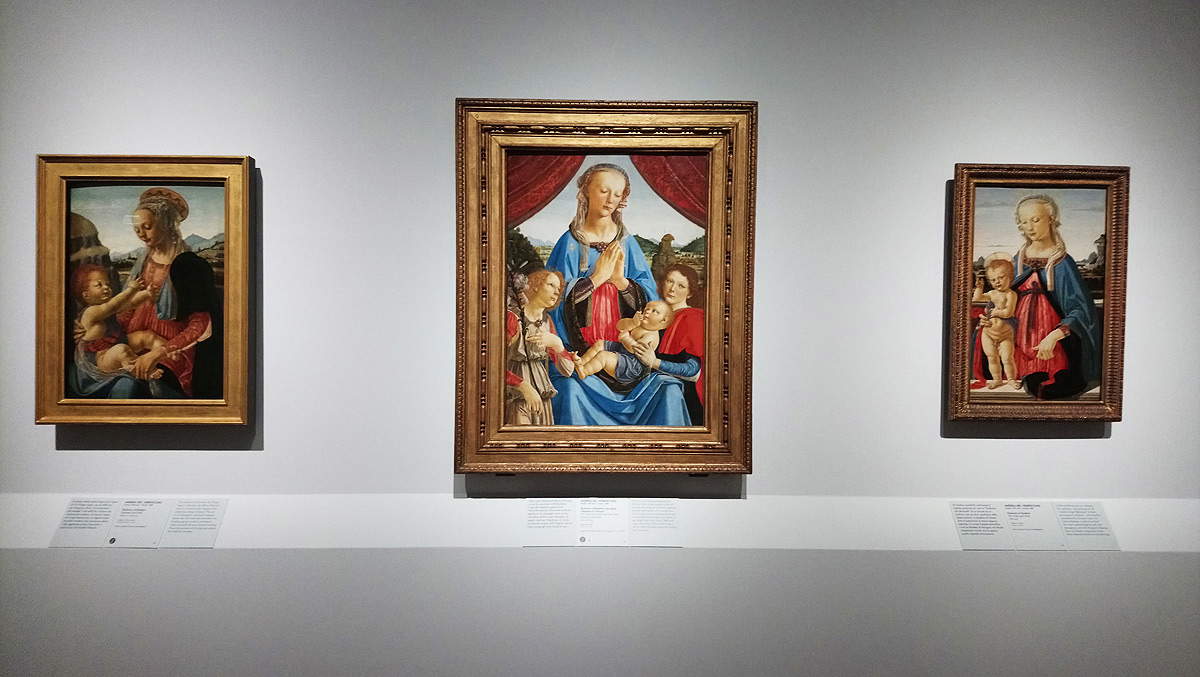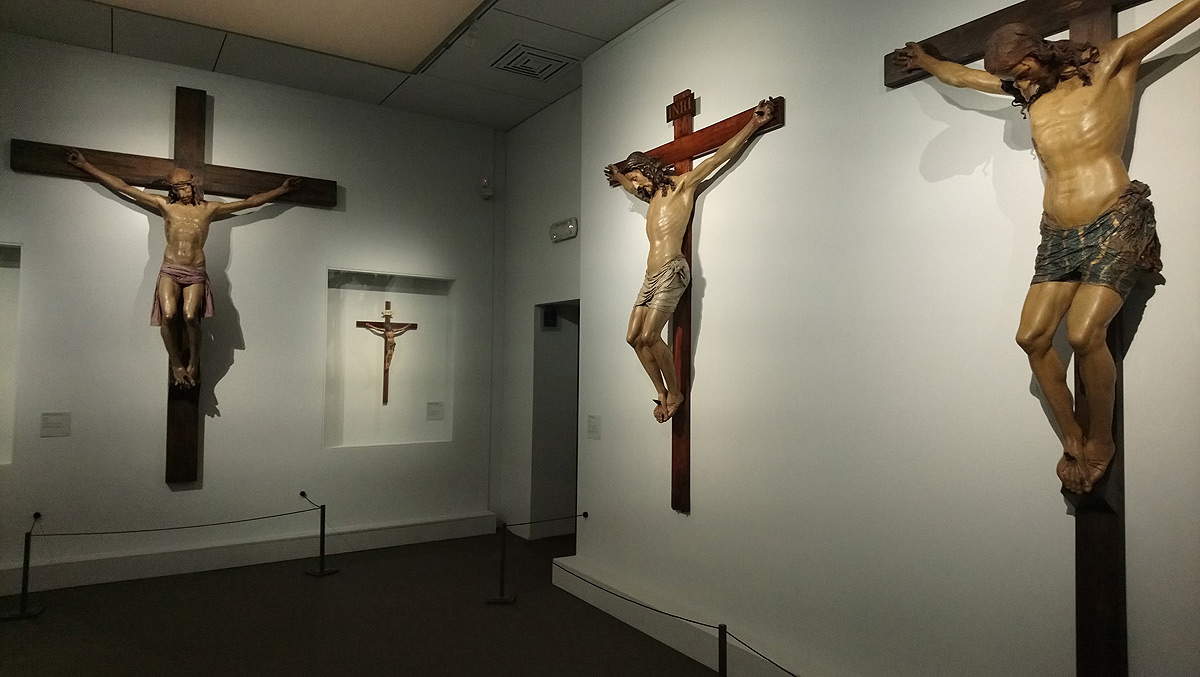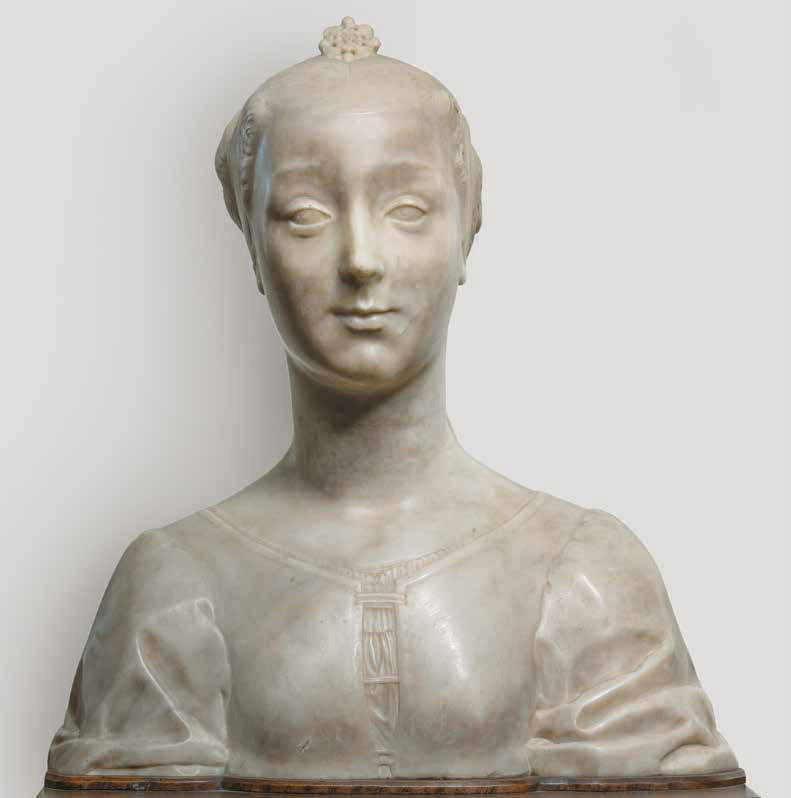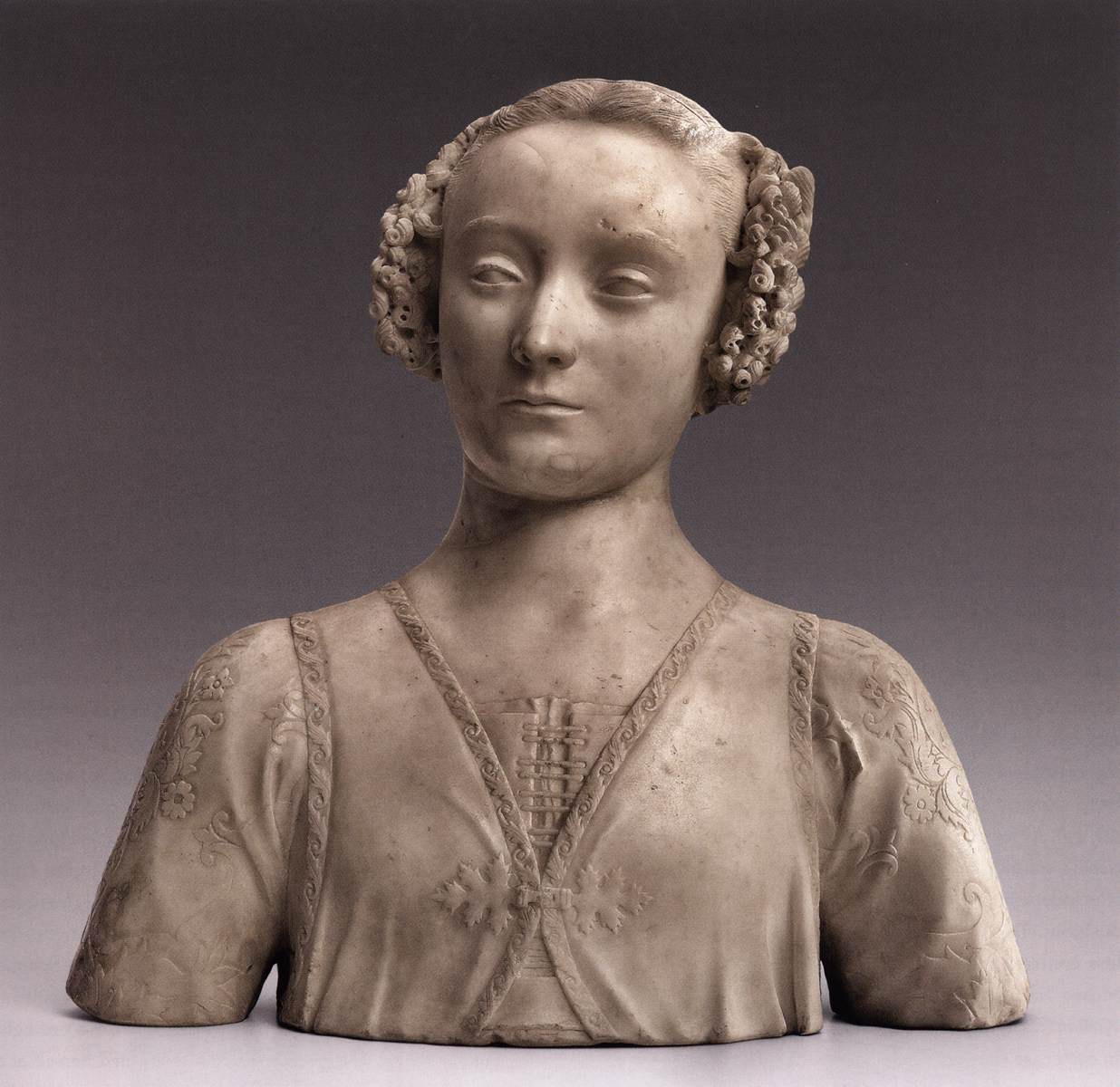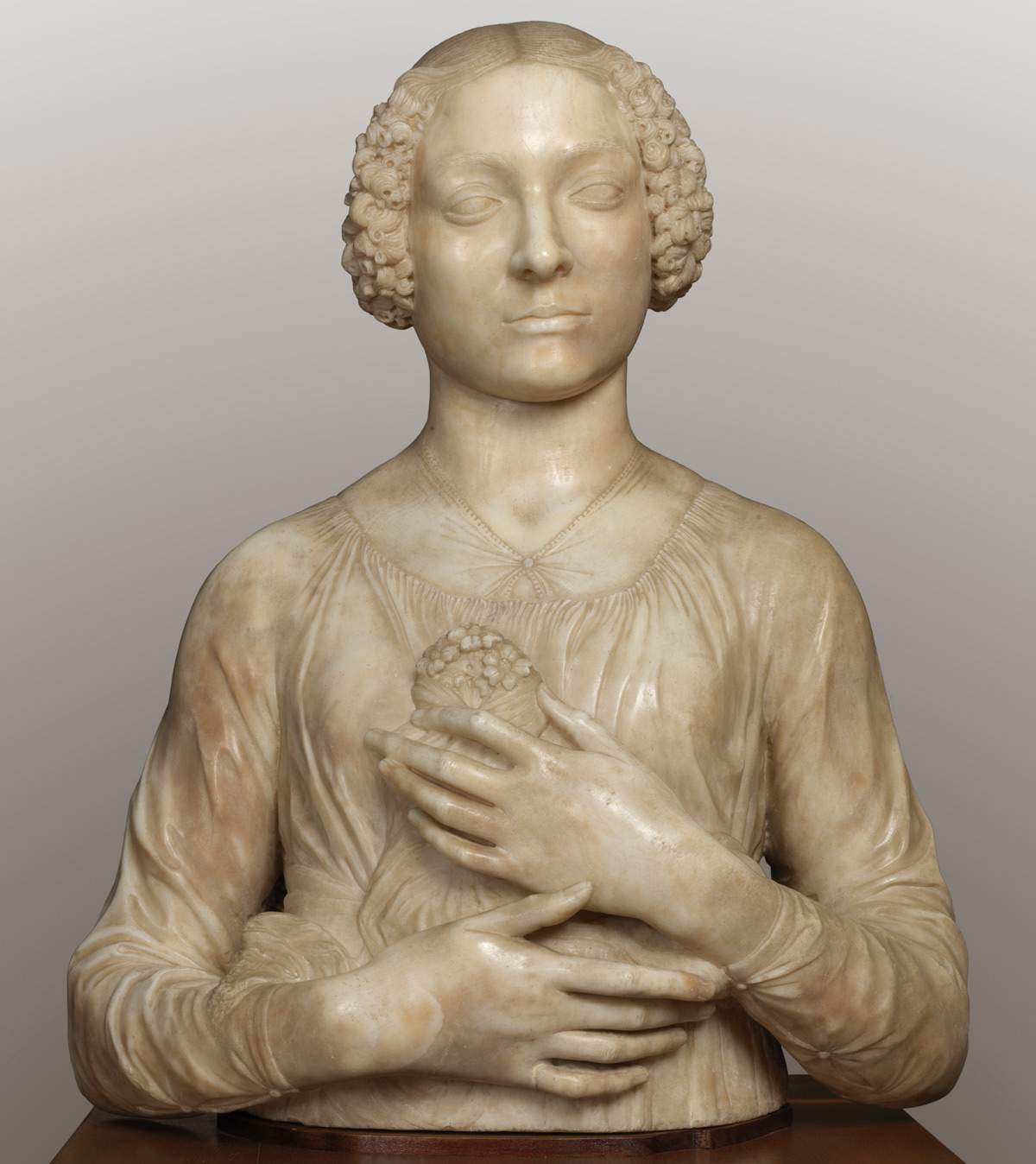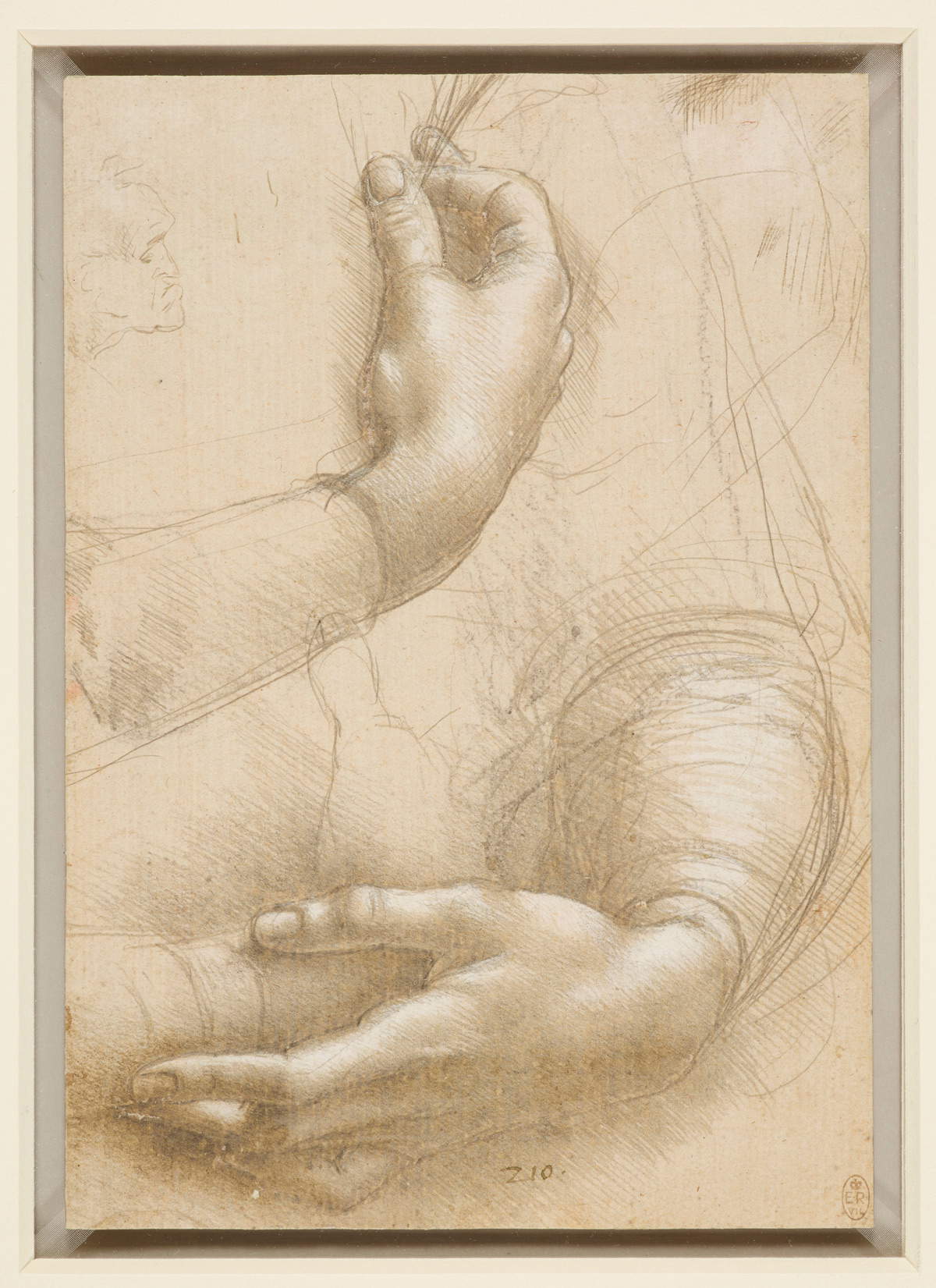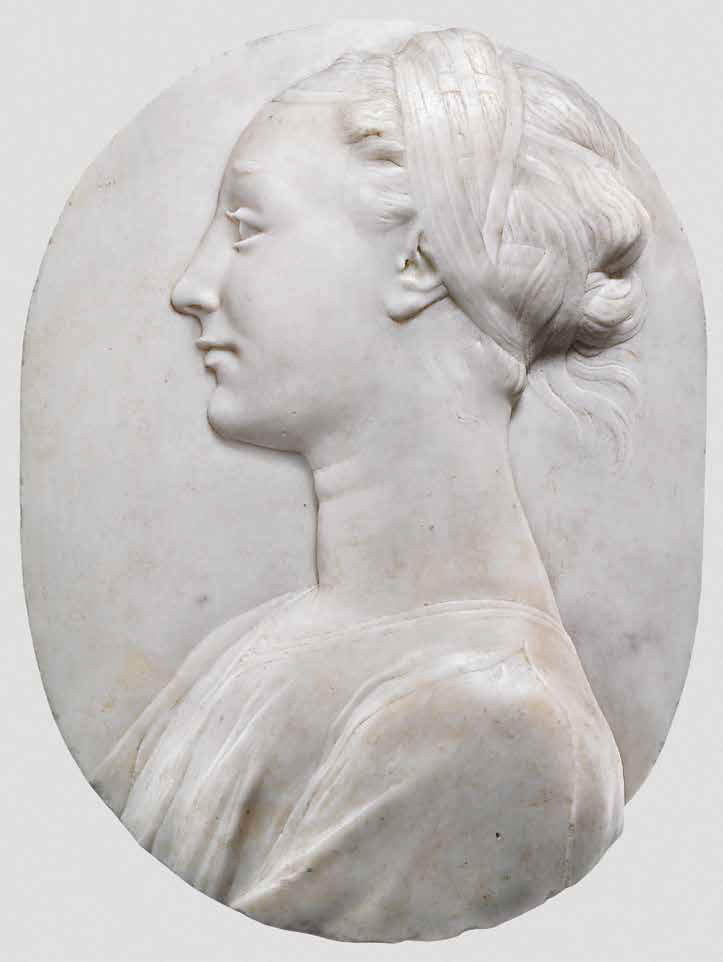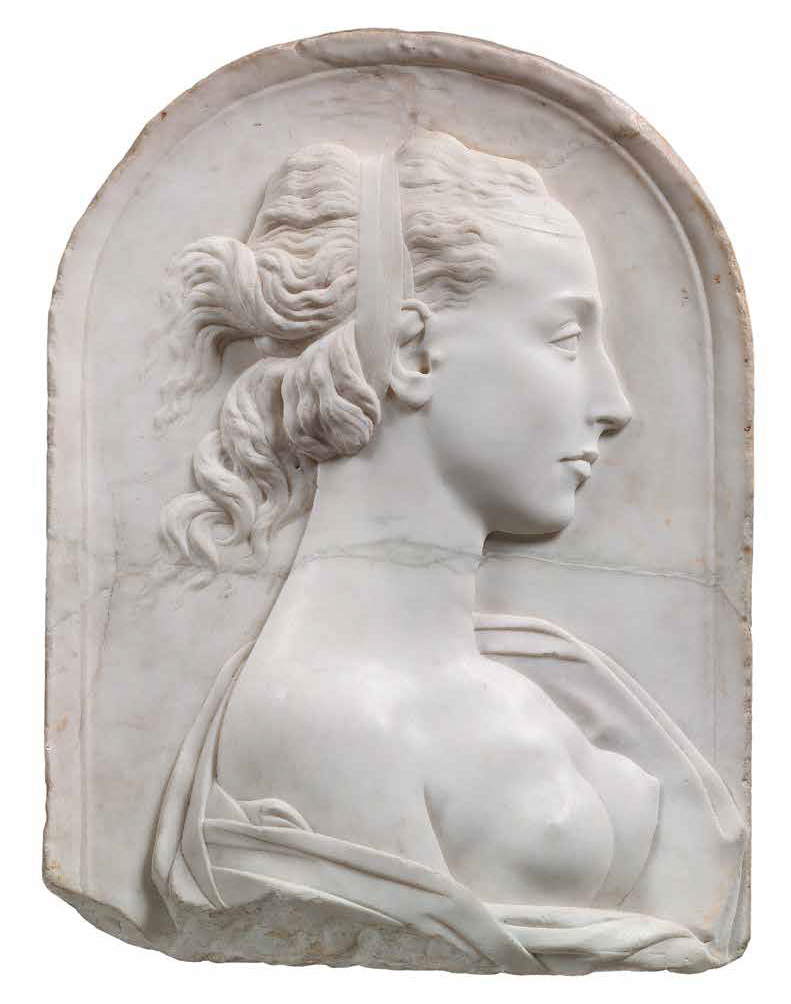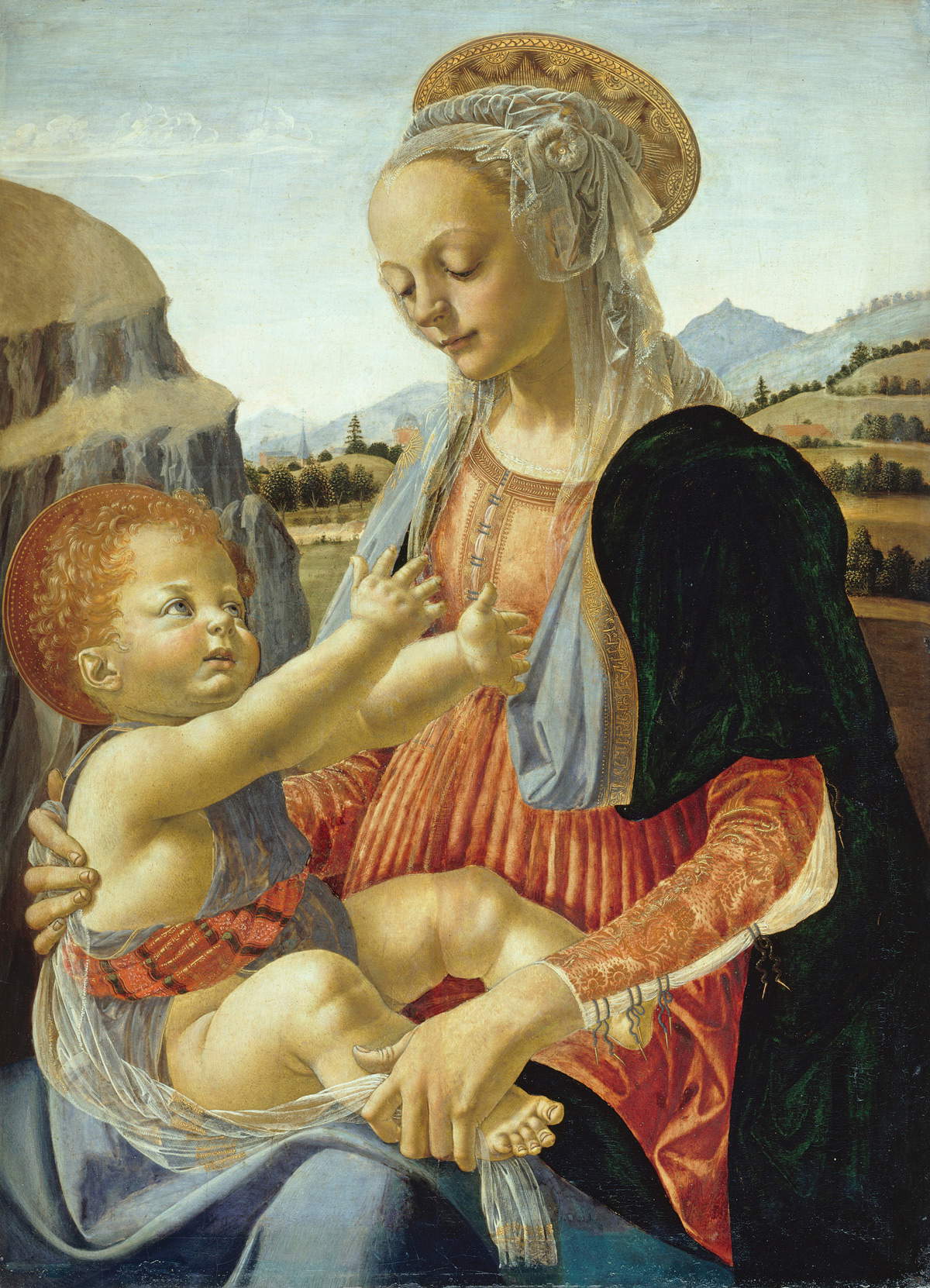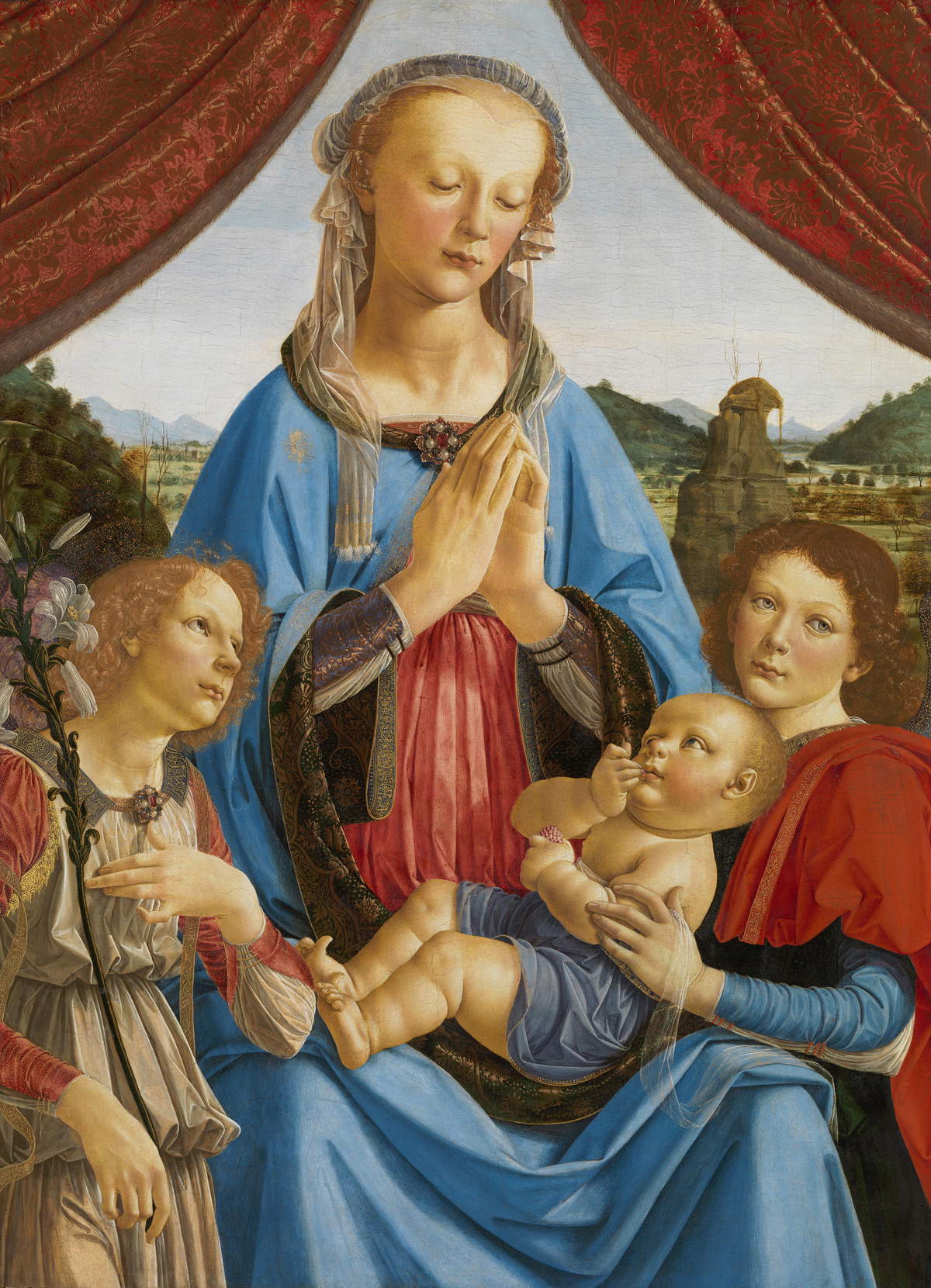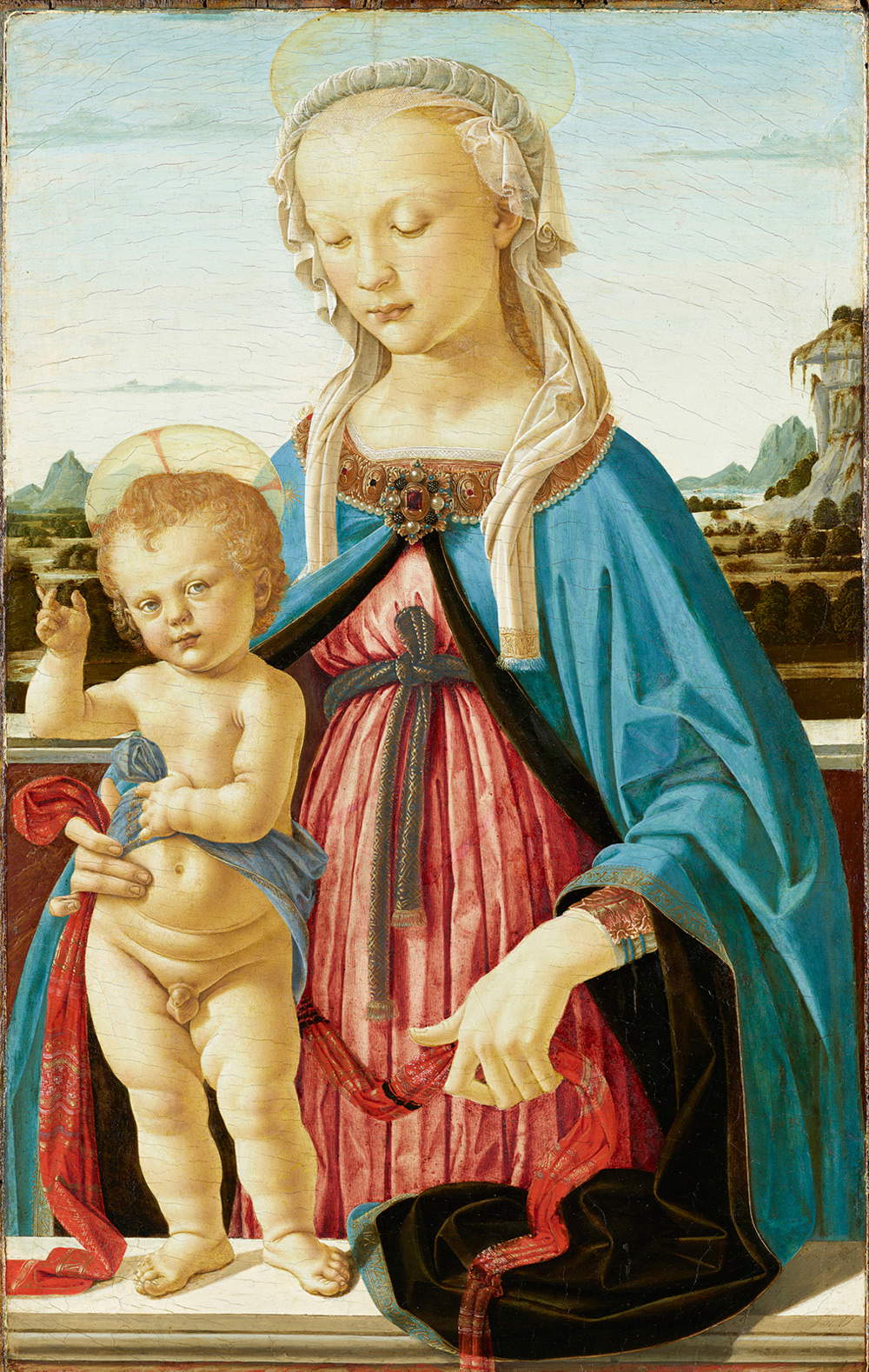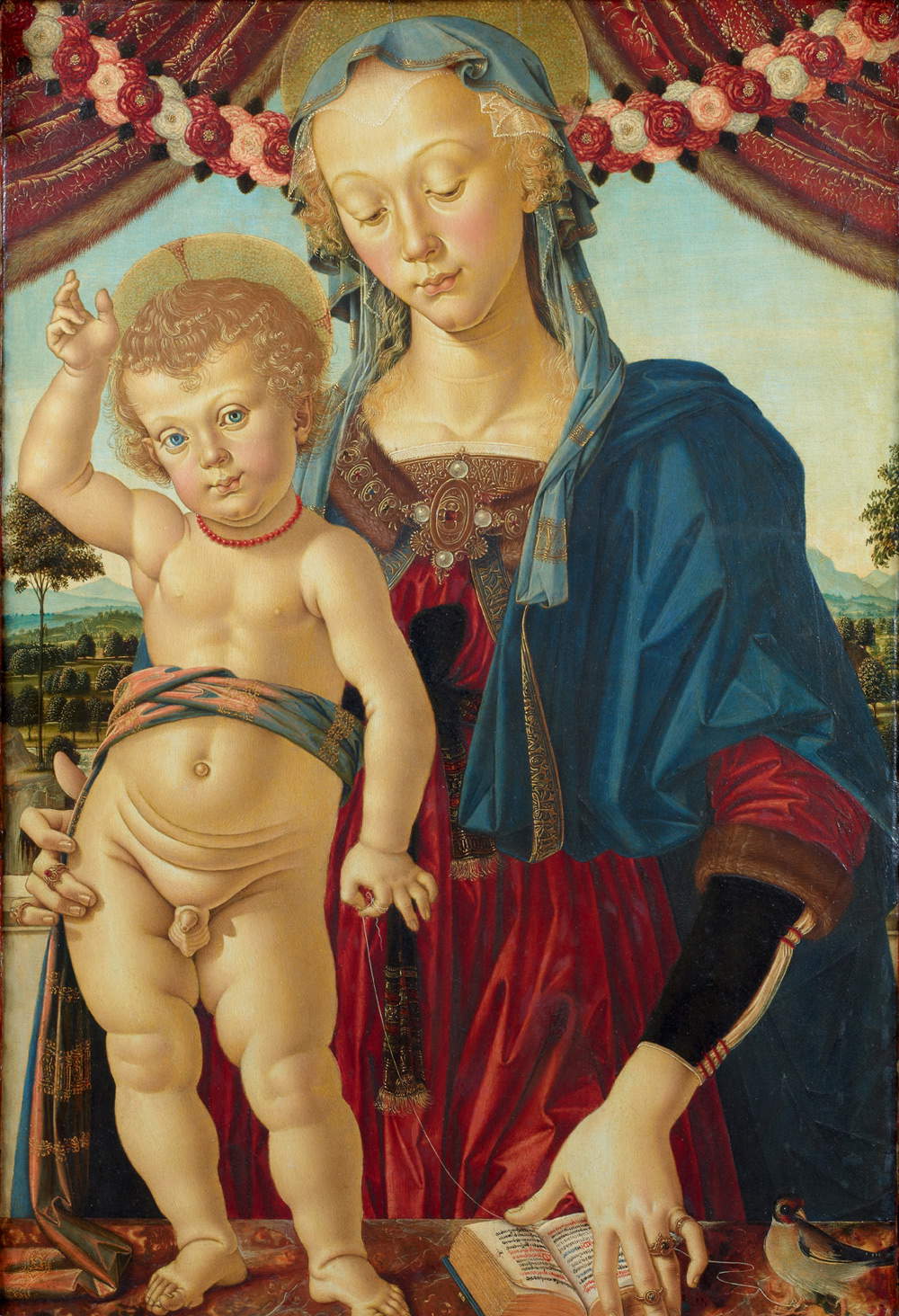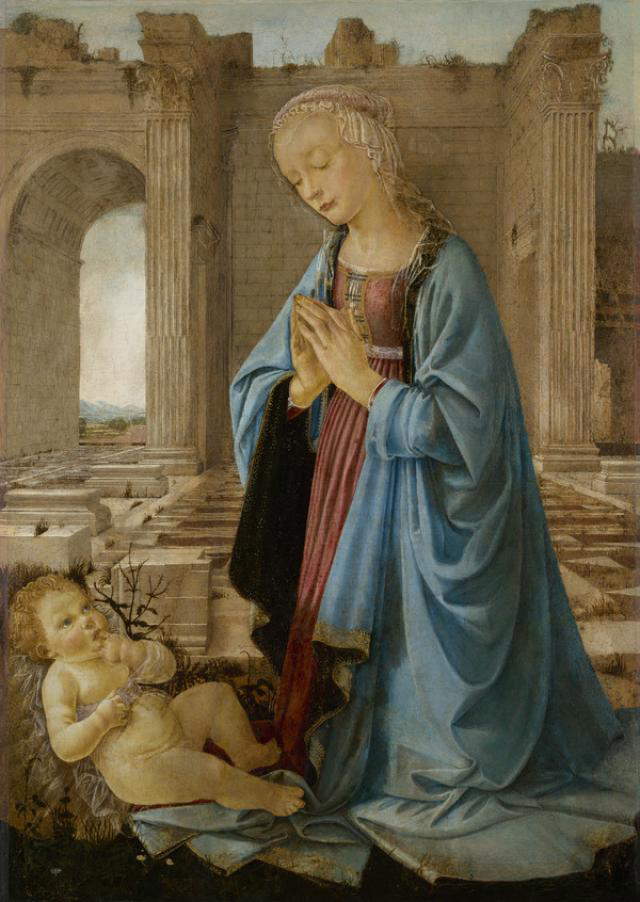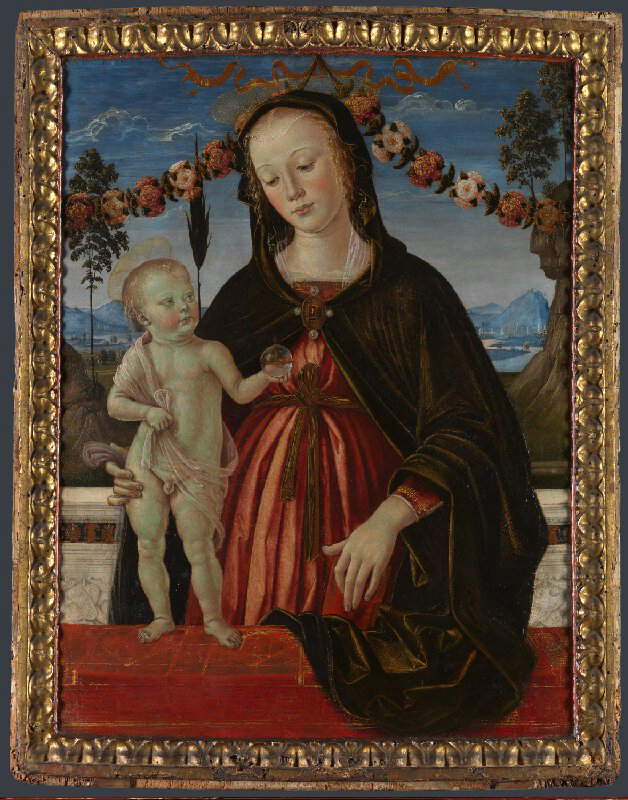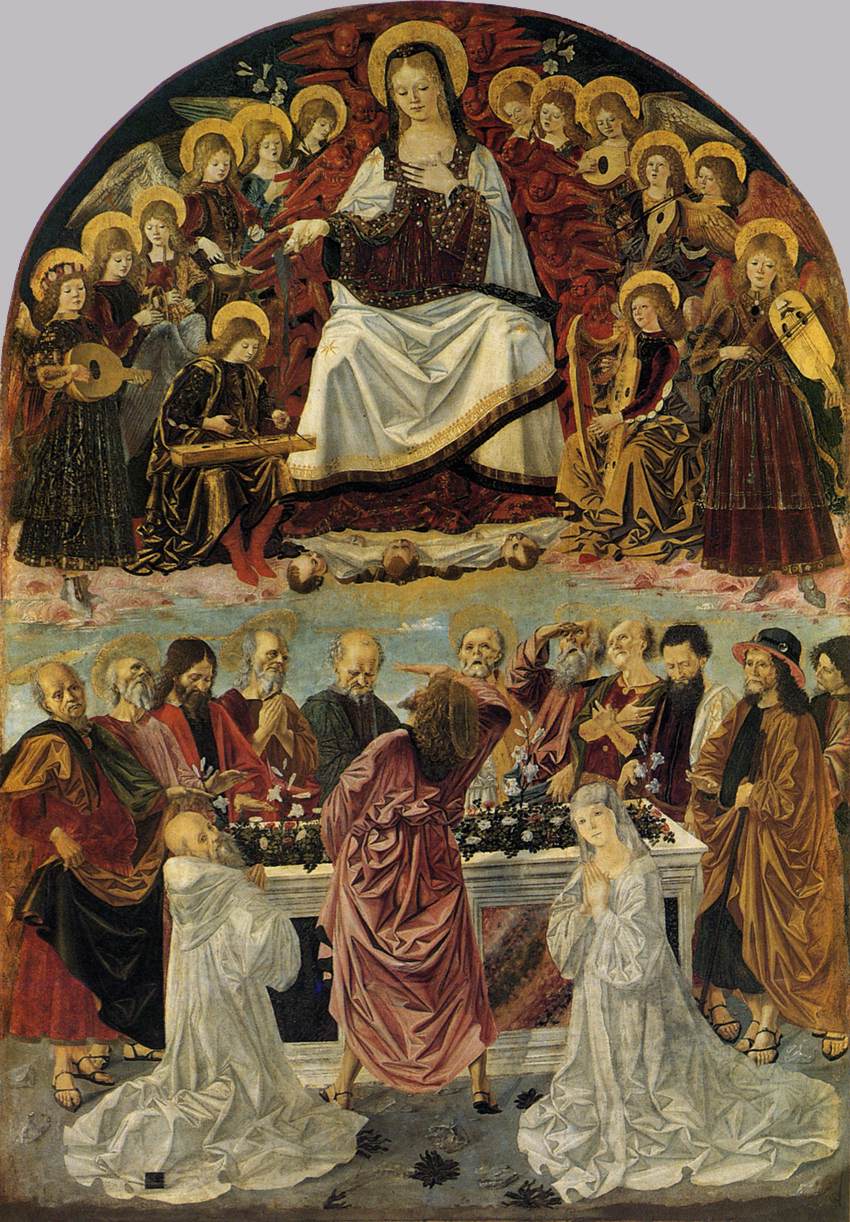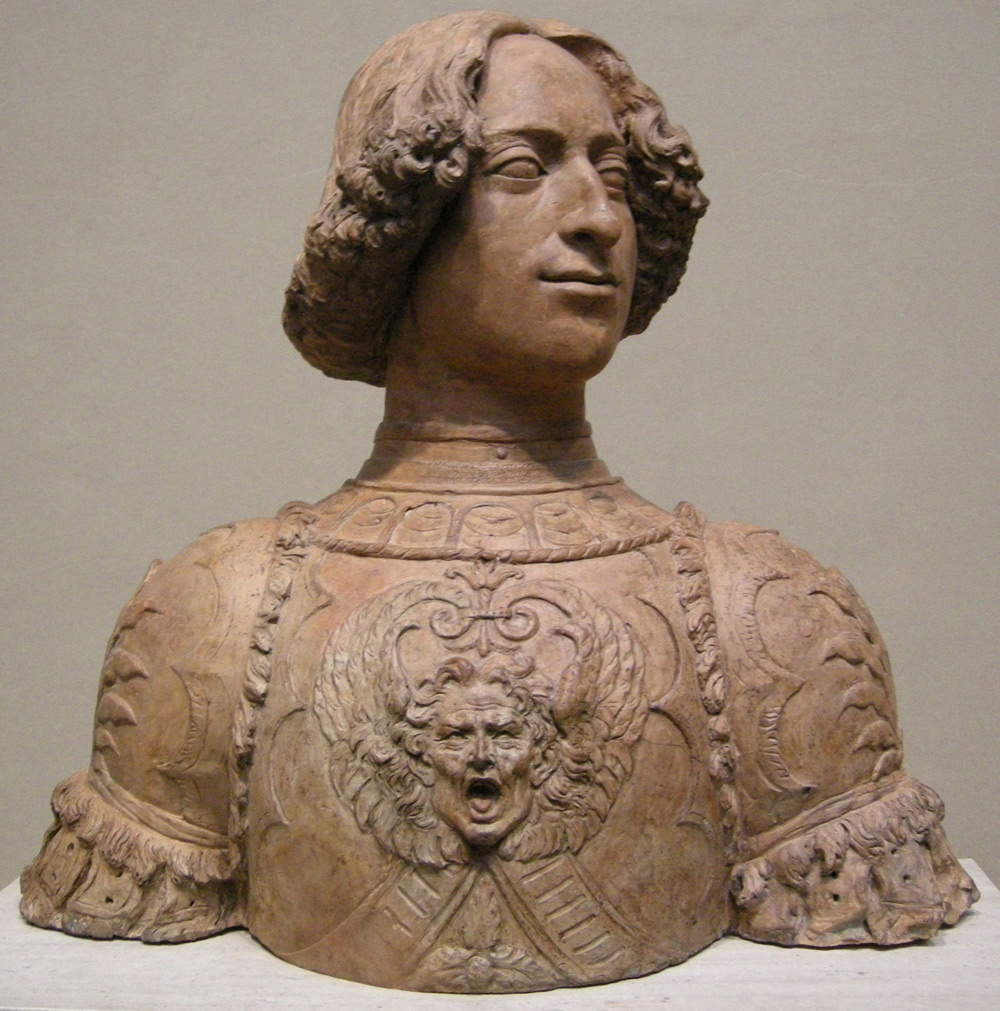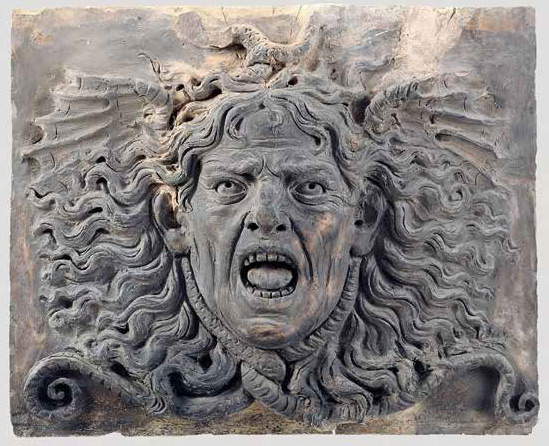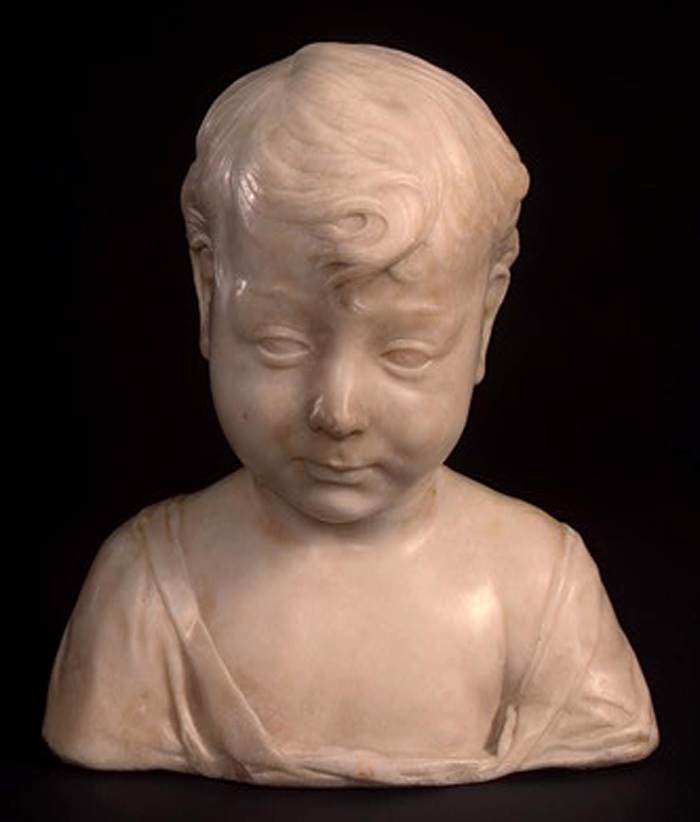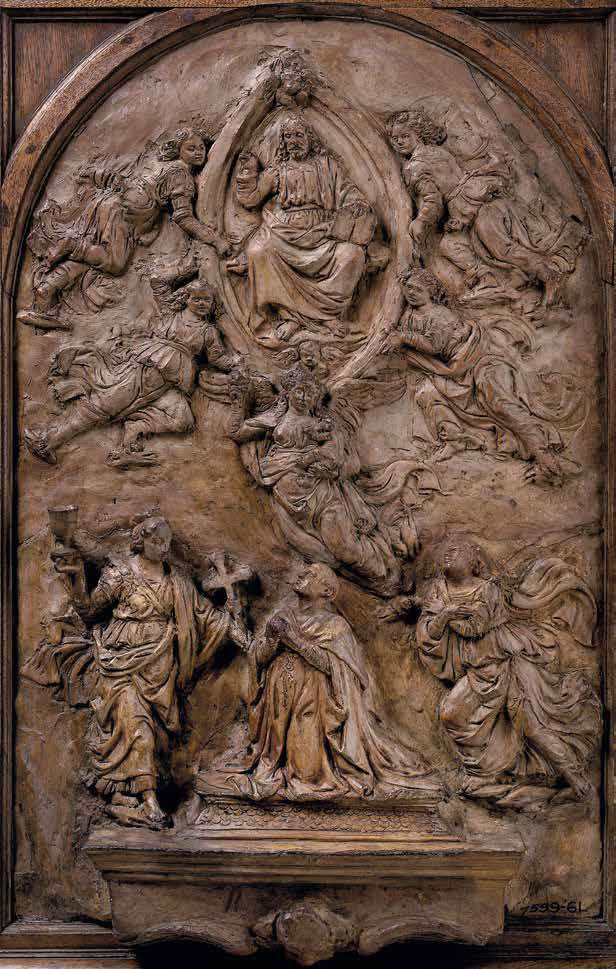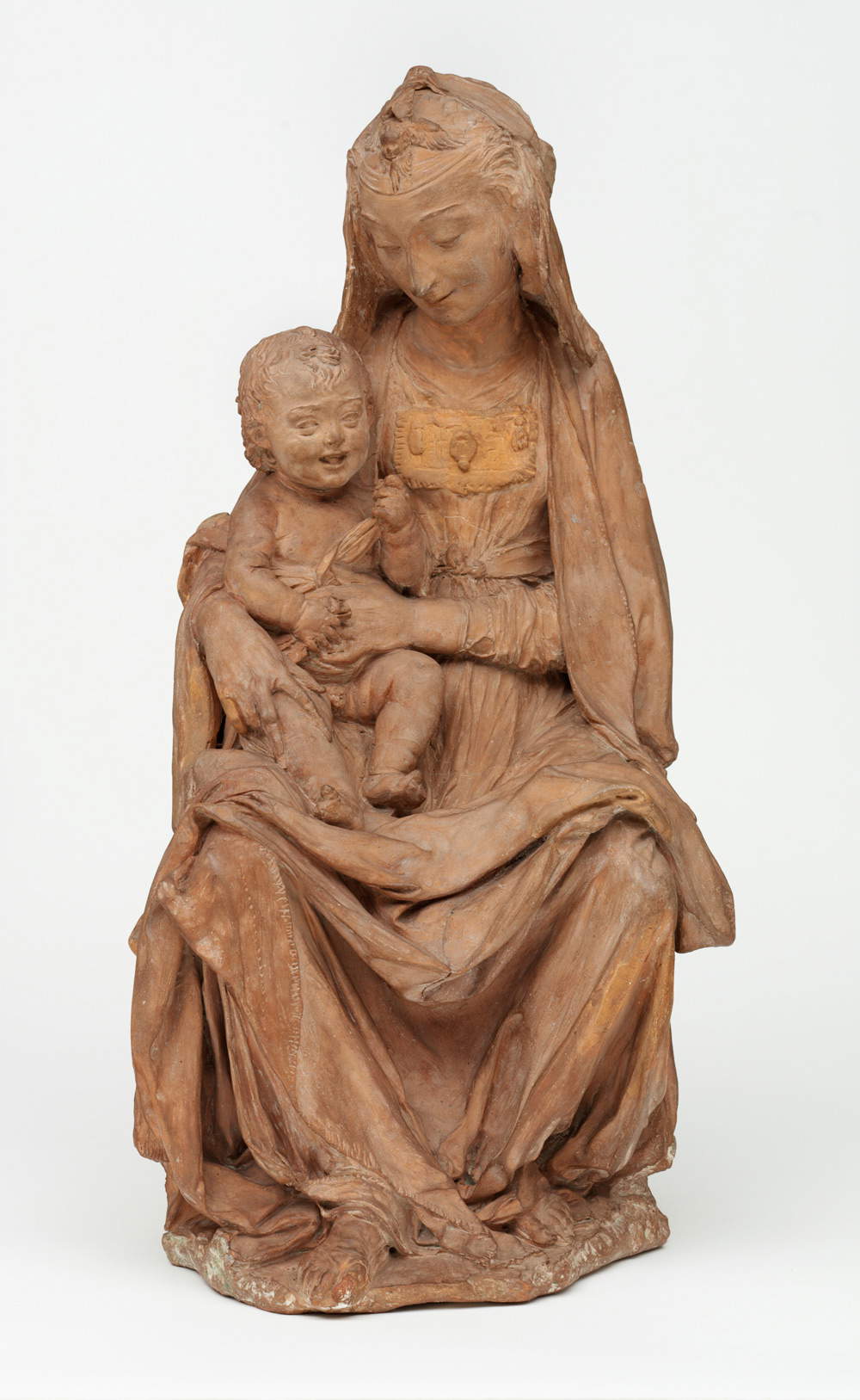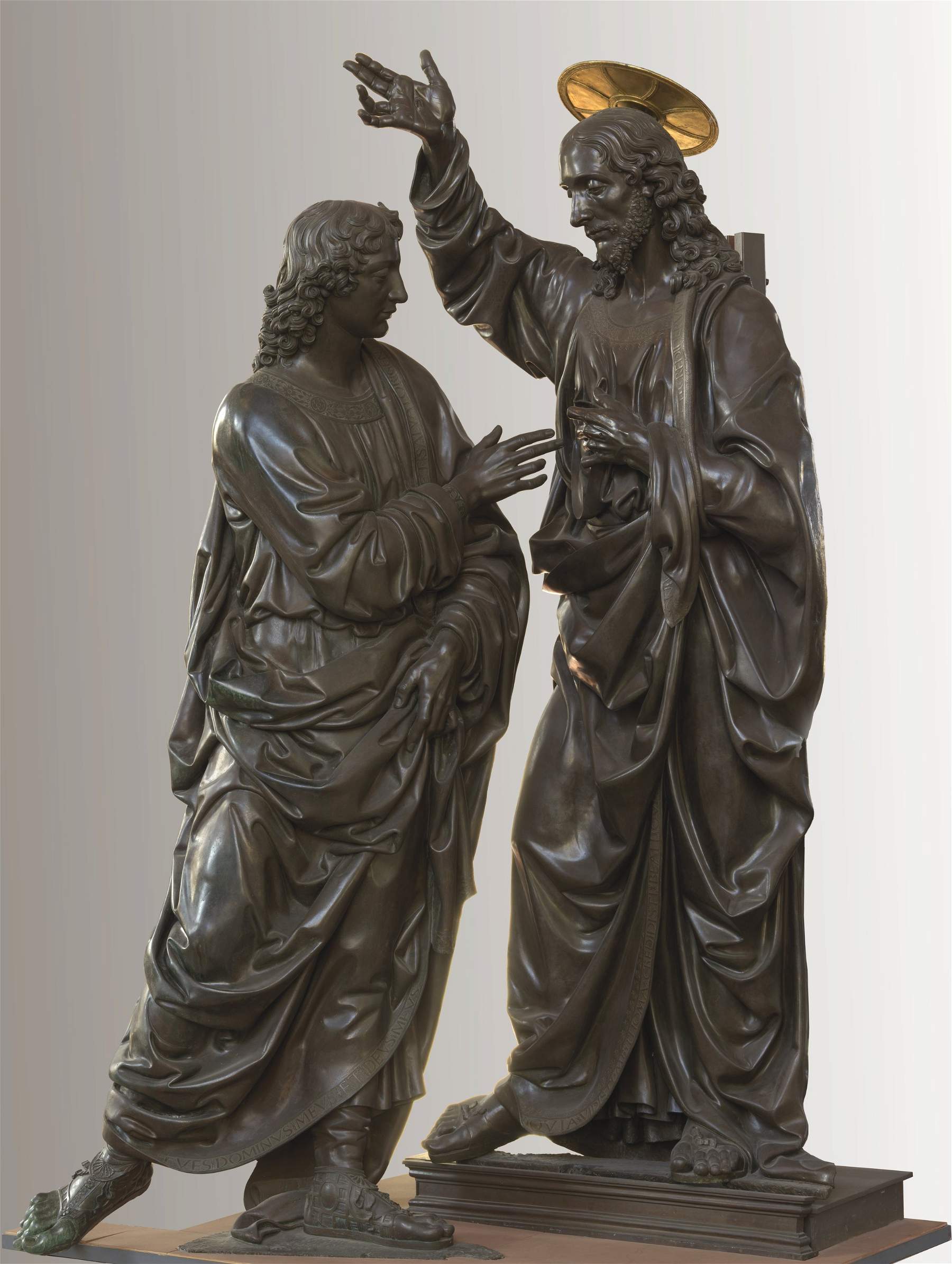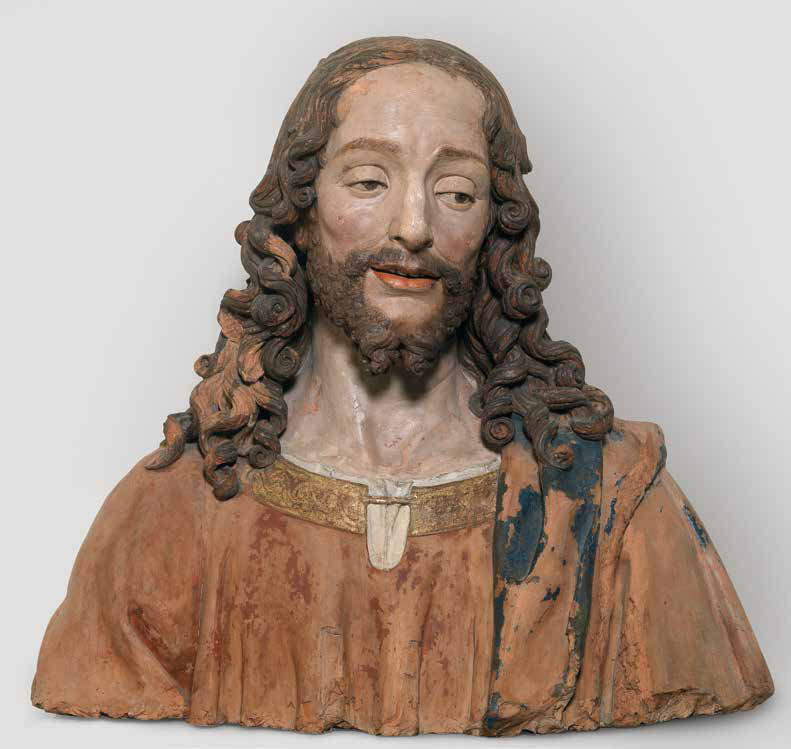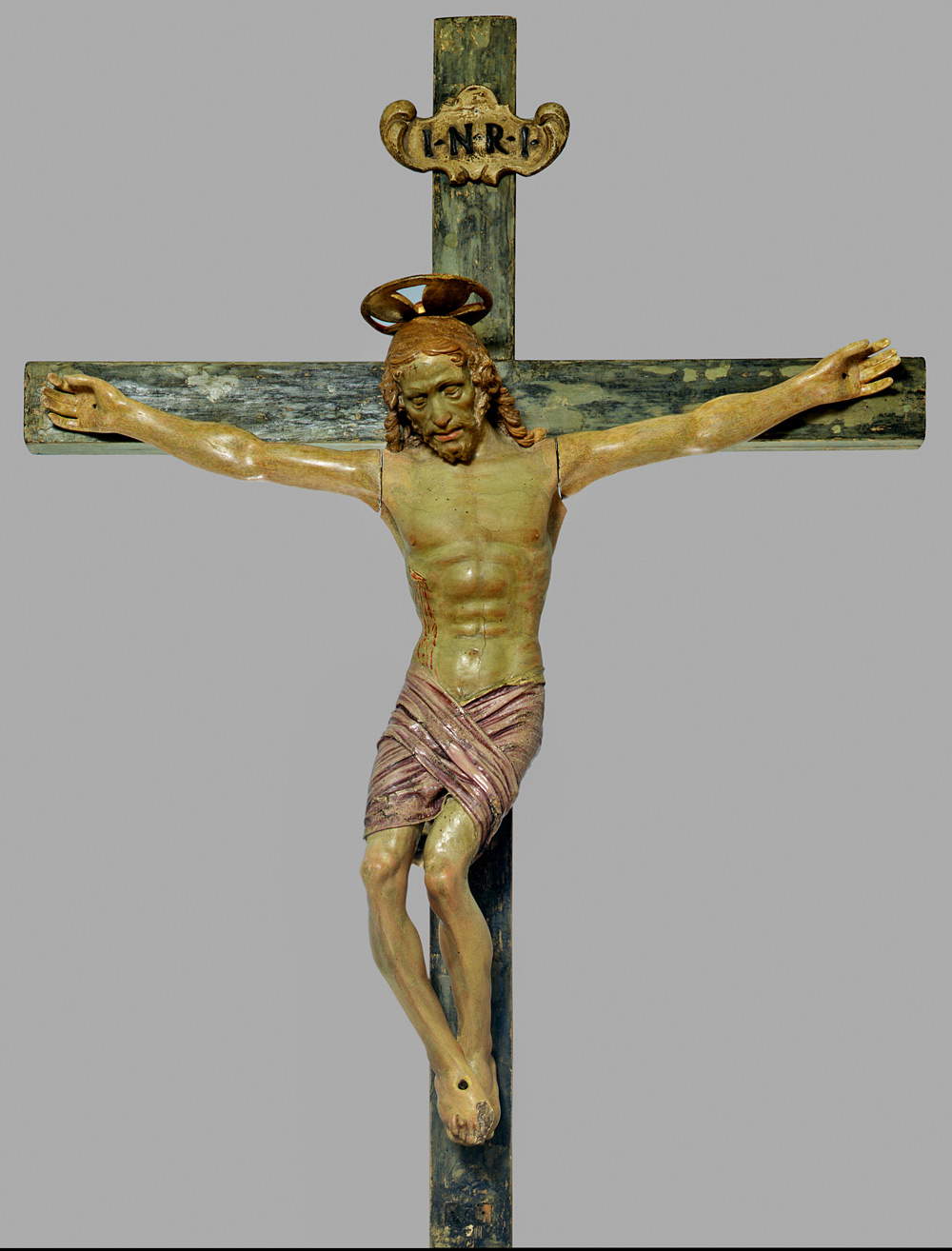by Federico Giannini (Instagram: @federicogiannini1), published on 16/03/2019
Categories: Exhibition reviews
/ Disclaimer
Review of the exhibition "Verrocchio. Leonardo's Master," in Florence, Palazzo Strozzi and Museo Nazionale del Bargello, March 9 to July 14, 2019
Despite the fact that the figure of Verrocchio (Andrea di Michele di Francesco Cioni; Florence, c. 1435 - Venice, 1488) is universally considered to be among the most significant in the history of art and his achievements are recognized as the basis from which the mature Renaissance (i.e., what, by Vasari’s definition, has come to be known as the “modern manner”) would spring, there have been few exhibition occasions in which the innovations introduced by the great Florentine master have been accounted for, of the supremacy he achieved in the context of Laurentian Florence, of the evolution of taste determined by him, and of the decisive role that his workshop played in the formation of a vast array of artists of anything but secondary importance (think of Leonardo da Vinci alone). Before the exhibition Verrocchio. Leonardo’s Master, underway at Palazzo Strozzi and the Museo Nazionale del Bargello from March 9 to July 14, 2019, Verrocchio was at most the protagonist of exhibitions focused on one work (this is the case of the one that followed the restoration of the Bargello’s David in 2003), or a supporting player in larger exhibitions on the Florentine Quattrocento (for example, in 2011 his Bust of a Gentlewoman and the Portrait of Giuliano de’ Medici took the road first to Berlin and then to New York to be displayed at the major two-stage exhibition on Renaissance portraiture from Donatello to Bellini), or even a nonstarring player in monographs devoted to others (such as the one on Leonardo held at the Palazzo Reale in 2015, when Verrocchio was called upon to accompany his illustrious pupil with a good selection of folios and a terracotta, or even when in 2011 his Lady with a Small Bunch was included in the exhibition on Lorenzo Bartolini to show how the echo of his lesson resonated even almost four centuries later). And it is indeed quite easy to infer the reasons behind such a lack of consideration: overcoming the problem of Vasari’s ungenerous judgment, which in some ways conditioned Verrocchio’s fortunes (the Aretine art historian, in calling his manner “somewhat harsh and cruel,” while recognizing him “among the rare et eccellenti artefici dell’arte nostra,” reproached him with an excess of artifice to the detriment of spontaneity), there has always been a clash, however, on the side of sculpture (as is well known, Verrocchio reached the highest grades in both the art of sculpture and that of the brush), with the immovability of his monumental masterpieces, which often constitute the most advanced peaks reached by his art, and on the side of painting with the difficulty of framing the production of an artist who came to paint only at an advanced age, although this did not prevent him from reaching lofty goals, and whose paintings are poorly documented.
The curators of the Palazzo Strozzi exhibition, Francesco Caglioti and Andrea De Marchi, among the leading specialists in the fifteenth century (for sculpture and painting, respectively), undertook their task aware of these problems: as far as Verrocchio’s sculptural activity is concerned, an attempt has been made to gather in the rooms on the piano nobile of the palace and in those on the first floor of the Bargello the masterpieces the most significant of his mobile production, and it can be safely and objectively asserted that the public of the exhibition will have until this summer the opportunity to see gathered in Florence all the best of what Verrocchio achieved during his career without any exclusion (the only thing missing is the silver altar of the Baptistery, which has been left at the Museo dell’Opera del Duomo so as not to impoverish the institution, and it should be added that the work is placed in a temperature- and humidity-controlled case, another reason why the decision to avoid moving it a few dozen meters cannot but be greeted positively). On the other hand, as far as the paintings are concerned, Andrea De Marchi has conducted a detailed study that, in addition to reconstructing the vicissitudes of Verrocchio as a “painter,” aims at reconsidering his historical weight and the scope of his art in the broader framework of the decades-long critical debate around his actual stature as a painter. One cannot but be struck by the amount of material on which De Marchi has worked, in order to arrive at many conclusions that will be accounted for in this article, not least because, it must be stressed, visitors will not be visiting an exhibition dedicated only to Verrocchio: the radiating capacity of his art inevitably entails a much broader discourse, which at Palazzo Strozzi is examined by themes and lines of development. Let it suffice to consider the relationship Verrocchio had with Leonardo: the exhibition’s subtitle is not just a concession to the logics of marketing (and, of course, if among the general public such an exhibition is also advertised by leveraging the name of the genius from Vinci, no downside can be seen) or a tribute to the celebrations of the five-hundredth anniversary of Leonardo (of the highest level and which, allow us a brief parenthesis, does not make us regret the lack of a Leonardo-kolossal exhibition, which, moreover, could be of little use just three and a half years after the aforementioned monographic at the Palazzo Reale), but it is also a clear explication, obviously argued in detail in the rooms, of how much the universality and versatility of an artist like Verrocchio represented for Leonardo’s experiments.
 |
| A room of the exhibition Verrocchio. Leonardo’s master |
 |
| A room of the exhibition Verrocchio. Leonardo’s master |
 |
| A room of the exhibition Verrocchio. Leonardo’s master |
The dialogue between master and pupil, in the exhibition at Palazzo Strozzi, is thus continuous, and it begins from the very first room, which investigates its origins and implications on the terrain of the female portrait, which the generation preceding Verrocchio’s made popular again and which becomes in the exhibition a privileged field for tracing a thread that has as its protagonists the motions of the human soul (e, in this case, those of women, in the first room) and which, starting with Desiderio da Settignano (Settignano, c. 1430 Florence, Jan. 16, 1464), reaches all the way to Leonardo da Vinci (Vinci, 1452 - Amboise, 1519). Verrocchio, as is well known, had his early training ingoldsmithing, and became familiar with sculpture later, approaching the workshop of Donatello (Donato di Niccolò di Betto Bardi; Florence, 1386 - 1466), and likewise being fascinated by Desiderio’s manner: a first intent of the exhibition is, moreover, to offer a reading on the relationships that link Verrocchio to both Donatello and Desiderio, regarding which Caglioti does not see any incompatibilities that would distance the young Andrea di Michele from either master (from the former, the curator points out, the artist derived the “monumental breath,” while from the latter “the flawless eagerness,” the path toward the “fanatical treatment of matter, almost to the point of exhaustion”). Desiderio would have wanted to bring a work of capital importance such as the Bust of Marietta Strozzi, and in the impossibility of obtaining it, he opted for the Young Gentlewoman of the Bargello, made with the help of the workshop and placed at the opening of the exhibition as an example of a portraiture that idealizes the woman without, however, cloaking her with those accents of sweetness and lyricism that characterize much of Desiderio’s production, accustomed to working marble with a refinement and finesse that did not consider ornamentation inferior to modeling and that became the means by which Verrocchio could create two works such as the Young Gentlewoman of c. 1465, now in the Frick Collection in New York (which is surprising for the very fine way it treats the curls and decorations of the blouse and bodice), and the celebrated Lady with a Small Bunch, with which the artist introduced the novelty of the forearms and hands that give an unprecedented motion to the portrait (until then the custom was to depict the arms from the elbow up), such as to make the image of the lady a portrait that is “suspended, collected, mutable,” with a gesture that wants to “transform the marble, take away its heaviness, lead it toward the same levity of the bouquet, without renouncing for this a precipitous dimension of lived experience” (so Marco Campigli in the catalog entry). Such a “mutability” is what leads to Leonardo and, in particular, to his Ginevra de’ Benci, for an art history textbook comparison, which at Palazzo Strozzi, however, is conducted by means of the sheet, arriving from the collections of the British royal family, containing the study for the lower part (now lost) of the Ginevra, the one with the hands, whose expressiveness and dynamism openly refer to the Verrocchio Lady.
The link between Desiderio and Verrocchio also animates the second room: the delicate sculptor from Settignano is presented to the public as the inventor of a new genre of portrait, the marble profile of a woman (a type that, while wanting in some way to recall classical art, in reality had no counterpart in antiquity except in cameos and gems: subtleties, for a patron who was indeed fond of antiquity, but far from wanting to reject a work for philological shortcomings) that would find a high example in the Young Gentlewoman from a private English collection and of recent attribution, an essay of an artist who was also at perfect ease in bas-relief (Desiderio’s mastery, according to Caglioti who formulated the attribution, is well demonstrated by some valuable pieces such as the lock of hair in the background, carved in stiacciato, the eyelashes, the way the dress is cut). The work is placed in dialogue with Verrocchio’s relief depicting An Ancient Heroine, which is in turn compared with a similar sculpture from the workshop: this is one of the most notable novelties of the Palazzo Strozzi exhibition, since the attribution to Verrocchio of theHeroine conserved at the Castello Sforzesco (and restored for the occasion as part of a vast campaign of interventions carried out on many of the works on display) is proposed here for the first time. Previously it had in fact been assigned to Desiderio, Francesco Ferrucci or Francesco di Giorgio Martini, when it had not been considered a nineteenth-century forgery, and in some cases it had been thought to be a replica of the other relief, the one in the Victoria & Albert Museum in London. To the ethereal and sentimental beauty of Desiderio’s damsel, Verrocchio “responds” with a more uninhibited heroine with disheveled hair and who has no problem showing her breasts to the viewer, as the iconography of Cleopatra dictates (and which in painting is punctually reflected in Piero di Cosimo’s celebrated Cleopatra, the one that for too long has been passed off as an improbable portrait of Simonetta Vespucci and which, according to Caglioti, would derive precisely from Verrocchio’s models) or that of Olympia, mother of Alexander the Great (who thus, bare-breasted, appears in a stone sculpture by Gregorio di Lorenzo). Again, Verrocchio in the exhibition is presented as an innovator, capable not only of actually inventing a taste by developing Desiderio’s intuitions, but also of imposing it authoritatively: from the profiles just mentioned would in fact be born the portraits of condottieri faced. In the same room are thus found, facing each other, the Scipio l’Africano already recognized in the nineteenth century as an autograph work, and theCarthaginian Hannibal from a private collection, which instead figures as a new attribution: Of Verrocchio’s condottieri, one is struck not only by the high degree of elaboration (see the helmets and armor), but also by the harsh, frowning expressions that would have provided several cues for Leonardo’s studies of physiognomy, evoked in a sheet, also from Windsor and placed in the center of the room, on which the Vinci artist traced several faces in profile. The section closes with the very famous David from the Bargello Museum, the summa of the artist’s meditations on the theme of the hero as well as one of the most emblematic symbols of his art and of the Renaissance as a whole.
 |
| Desiderio da Settignano and workshop, Young Gentlewoman (c. 1455-1460; marble, 47.5 x 43.5 x 22 cm; Florence, Museo Nazionale del Bargello, inv. Sculpture 62) |
 |
| Andrea del Verrocchio, Young Gent lewoman (c. 1465-1466; white marble, 47.3 x 48.7 x 23.8 cm; New York, The Frick Collection, inv. 1961.2.87) |
 |
| Andrea del Verrocchio, Lady with a Small Bunch (c. 1475; marble, 59 x 46 x 24 cm; Florence, Museo Nazionale del Bargello, inv. Sculpture 115) |
 |
| Leonardo da Vinci, Female Arms and Hands; Male Head in Profile (c. 1474-1486; dargento point and lead point, with later retouches of the profiles in soft black-greyish pencil, the whole illuminated with white lead with brush and gouache, on paper prepared lightly in skin-colored pink, 215 x 150 mm; Windsor Castle, Royal Library, The Royal Collection Trust, inv. RCIN 912558) |
 |
| Desiderio da Settignano, Young Gentlewoman (c. 1455-1460; marble, 39.5 x 29.8 x 9.7 cm; England, Private Collection) |
 |
| Andrea del Verrocchio, Ancient Uneroine (Olympia or Cleopatra) (c. 1461-1464; marble, 46 x 31 x 6.5 cm; Milan, Museo dArte Antica, Castello Sforzesco, inv. 1092) |
 |
| Andrea del Verrocchio workshop, Ancient Uneroine (Olympia or Cleopatra) (1460s-1970s; marble, 47 x 34 x 10.30 cm; London, Victoria and Albert Museum, inv. 923-1900) |
 |
| Andrea del Verrocchio, Victorious David (c. 1468-1470; bronze with traces of gilding, 122 x 60 x 58 cm; Florence, Museo Nazionale del Bargello, inv. Bronzi 450 - Goliath’s head and inv. Bronzi 451 - David) |
In the third room we begin to familiarize ourselves with the painter Verrocchio, a subject for which Andrea De Marchi has set out an itinerary that starts with the so-called Madonna 104A in the Berlin State Museums (“104A” is its inventory number), placed to open the discussion as it is the painting that has enjoyed the greatest consensus among the scientific community toward a recognized autography. Verrocchio displays manners that owe debts to Filippo Lippi (the attitudes, such as that of the Child outstretching his arms, the oval of the face, the hairstyle, the drapery, the formal elegance), but the Flemish ancestry of the landscape has also been emphasized: to these values are added the typical characteristics of the painter Verrocchio, such as the vigorous and almost monumental plasticism of the figures and the remarkable pieces of virtuosity (note the care lavished on the rendering of the fabrics). We continue with Madonna 108, also from Berlin, and Madonna and Child with Two Angels from the National Gallery, displayed side by side on the same wall near 104A: it will be worth mentioning that here De Marchi wanted to rename the London work as the Madonna of Volterra, going so far as to elevate it among the five capital works of the Florentine Quattrocento (the others, for the curator, are Masaccio’s Trinity, Beato Angelico’s San Marco Altarpiece, Domenico Veneziano’s Santa Lucia de’ Magnoli Altarpiece, and Leonardo da Vinci’sAdoration of the Magi ). De Marchi’s proposition is twofold: on the one hand, it is intended to provide some answers to the problem of Verrocchio the painter by reconstructing his activity, and on the other hand, it is intended to frame the beginnings of some great artists of the next generation (above all Perugino) in the wake of Verrocchio’siter. As for the 108, the exhibition at Palazzo Strozzi intends to reaffirm the attribution to Verrocchio already advanced by Bernard Berenson, shared by Konrad Oberhuber and reaffirmed by Pietro Scarpellini, and to repropose Berenson’s idea that he considered it a founding text for Perugino (Pietro Vannucci, Città della Pieve, c. 1450 - Fontignano, 1523): the work is distinguished by the idea of placing the Child standing on the windowsill, held up by the Virgin with hands bearing those wriggling, twisted fingers that De Marchi morellianly identifies among the Florentine artist’s “initials.” and which will be punctually taken up by Perugino in the Madonna and Child of the Musée André-Jacquemart in Paris, arranged on the opposite wall (and whose attribution to the Umbrian painter was first formulated by Berenson, although not unanimously accepted, indeed: even recently the work has provoked discussion). A panel that traces the 108 by exasperating its decorativism, accentuating the roundness of the Child to the point of giving him an almost muscular character, lowering the horizon of the foreshortened landscape (which is quite similar to the landscape passages that appear in other early achievements of Pietro Vannucci). Regarding the marvelous Madonna of Volterra, so called by De Marchi because in the 19th century it was owned by the Contugi family who lived in the ancient Tuscan city, the Palazzo Strozzi exhibition provides an opportunity to reaffirm the attribution to Verrocchio, also first advanced by Berenson in the 1930s: among the pinnacles of Florentine art in the second half of the fifteenth century, is a work imbued with sentiment; it is a manifestation of Verrocchio’s tendency to bring back within a dimension of refined but vivid naturalness the idealizing impulses typical of the art of the time (far from dormant: the painting’s formal geometry speaks for itself), it is evidence of the meticulous approach with which the artist set to work, it is a masterpiece of light and clarity whose consequences would be felt in the production of the “creations.”
“Everyone wanted to imitate these subtle illusive abilities and this new elegance,” De Marchi points out, and Verrocchio’s ideas, initially popularized by Perugino, spread first to Umbria and then as far as Rome and Abruzzo: after a brief passage devoted to Verrocchio frescante, with the display of the San Girolamo from the church of San Domenico in Pistoia, the following section of the exhibition aims to point out terms and modes of such propagations (or at least of those that took place in Perugia and its surroundings). It begins with the important loan of all the panels of the so-called “Bottega del ’73,” a choral enterprise (these are the decorations, executed in 1473, of the niche that housed the statue of St. Bernardino in the church of San Francesco al Prato in Perugia) in which several notable Umbrian artists of the time took part, with critics having always questioned who painted what, although there is substantial agreement that the direction of the whole is up to Perugino. The exhibition intends to focus on the dependencies of the eight panels on Verrocchio’s art (and consequently, 1473 becomes a pivotal date for advancing the dating of his earliest paintings), which highlight their Florentine culture notably in the stories executed directly by Perugino (i.e., the Restoration of the Ulcerated and the Miracle of the Blind): the formal elegance, the cult for classical antiquity evident especially in the architectures (which dialogue admirably and coherently as much with the landscape as with the characters, capable of animating the scenes by giving them distinct narrative accents), the passages of landscape (what can be seen beyond the foreshortened arch in central perspective in the scene of the Redevelopment is taken almost slavishly from the Madonna and Child with Two Angels in the National Gallery), the clear atmospheres, the poses of some of the characters that recall David, and the shading used to model the figures. Some of these motifs, above all the richness of the decorative apparatus, found fertile ground in Pinturicchio (Bernardino di Betto; Perugia, c. 1456-Siena, 1513), who took part in the 1473 undertaking: the clarity of the landscape and the taste for the antique (evident in the decorations of the parapet: a taste, however, that Pinturicchio had the opportunity to cultivate and develop while staying in Rome) that we find in the panels of St. Bernardino reverberate in the Madonna and Child in the National Gallery in London. Obviously, the lesson of the painter Verrocchio was also willingly received in Tuscany: at Palazzo Strozzi arrives from Edinburgh the Ruskin Madonna by Domenico del Ghirlandaio (Domenico di Tommaso Bigordi; Florence, 1448 - 1494), painted by the artist in his early twenties probably at the time when he was in Verrocchio’s workshop and a work with a linearism that echoes that of Madonna 108 or the Madonna already in Volterra (with the substantial difference that Ghirlandaio softens the master’s more incisive profiles: the singular architectural setting, on the other hand, is entirely alien to Verrocchio), while from the Museo Diocesano in Cortona comes the imposing Assumption of the Virgin by Bartolomeo della Gatta (Pietro d’Antonio Dei; Florence, 1448 - Arezzo, 1502), considered here, along the lines of Alberto Martini’s and Luciano Bellosi’s considerations, to be an early work by the painter, and considered as such also by virtue of its Ghirlandaio ancestry (one insists on the sharp draperies, on the relations between certain poses and certain expressions that would find parallels in works by the master, starting with the Pistoia fresco that would explain the profiles of Bartolomeo della Gatta’s elderly saints). Ghirlandaio abounds in the room (with no less than three works), while the absences of painters who also looked to Verrocchio, most notably Botticelli, are recorded: only one painting for him in the preceding section, at least apparently more to find agreement with the common Lippesque source than to emphasize debts to Verrocchio on the part of Sandro, who is also defined by Cecilia Martelli in the catalog as an artist who certainly suffered “the ascendancy of the artist then most in vogue in Florence.”
Similarly, as much as the room hints at the Roman and Abruzzese diffusion of Verrocchio’s pictorial language, this topic is left aside and Rome returns, if anything, in the next section but, removed from the presence of a Nativity by Antoniazzo Romano, mainly to reason about the stay that Andrea di Michele spent there (according to Caglioti before the papacy of Sixtus IV, contrary to Vasari’s claims) and especially on the theme of his relationship with the ancient, which we are forced to evaluate in the absence of works made directly in Rome: none have reached us. However, rather than returning to a subject that had already been mentioned in the room that exhibited ancient condottieri (in this sense the Bust of Giuliano de’ Medici is a sort of extraordinary revival, even though it is a portrait of a contemporary character: the young brother of the Magnifico, brutally murdered during the Pazzi conspiracy, was compared by Caglioti to an Alexander the Great), it is interesting to understand how Rome received Verrocchio’s sculpture. The exhibition therefore examines some works by an anonymous follower of the master, a sculptor of Florentine origin who passed through Verrocchio’s workshop and then settled in Rome. His two Squires in the Capitoline Museums in Rome mix a rigorous classicism (evident in the pose) with Verrocchio’s decorative exuberance, and direct emanations of the master are the architectural fragments that decorated the façade of a Roman house on Via dell’Arco dei Ginnasi (note, in particular, the Gorgon quite similar to the one that appears on the armor of Giuliano de’ Medici): works that by quality cannot be ascribed to Verrocchio’s hand, and for which Caglioti here advances, albeit with caution and question marks, the attribution to Michele Marini da Fiesole (Fiesole, 1459 - ?), given all the difficulties involved in assigning a work (or group of works) to such a poorly documented artist. Another reason that, one presumes, will be a source of discussion among specialists.
 |
| Andrea del Verrocchio, Madonna and Child (c. 1470 or 1475; tempera and oil on panel, 75.8 x 54.6 cm; Berlin, Staatliche Museen zu Berlin, Gemäldegalerie, inv. 104A) |
 |
| Andrea del Verrocchio, Madonna and Child with Two Angels (c. 1471-1472; tempera on panel, 96.5 x 70.5 cm; London, The National Gallery, inv. NG296) |
 |
| Andrea del Verrocchio, Madonna and Child (c. 1470; tempera on panel, 75.8 x 47.9 cm; Berlin, Staatliche Museen zu Berlin, Gemäldegalerie, inv. 10) |
 |
| Pietro Perugino, Madonna and Child (c. 1470-1471; oil on panel, 62.3 x 41.4 cm; Paris, Musée Jacquemart-André, inv. MJAP-P.1830) |
 |
| Pietro Perugino, St. Bernardino Heals the Daughter of Giovannantonio Petrazio da Rieti from an Ulcer (1473; tempera on panel, 79.1 x 56.9 cm; Perugia, Galleria Nazionale dellUmbria, inv. 2) |
 |
| Domenico del Ghirlandaio, Madonna in Adoration of the Child known as Madonna Ruskin (c. 1470; tempera and oil on canvas, transported from panel, 106.7 x 76.3 cm; Edinburgh, National Galleries of Scotland, inv. NG 2338) |
 |
| Pinturicchio, Madonna and Child (c. 1475; tempera on panel, 48.3 x 36.8 cm; London, The National Gallery, inv. NG2483) |
 |
| Bartolomeo della Gatta, Assumption of the Virgin with St. Benedict and St. Scholastica (c. 1473; tempera on canvas, 317 x 222 cm; Cortona, Museo Diocesano di Cortona ) |
 |
| Andrea del Verrocchio, Giuliano di Piero de Medici (c. 1475; terracotta, formerly painted, 61 x 66 x 28.3 cm; Washington, National Gallery of Art, Andrew W. Mellon Collection, 1937.1.127) |
 |
| Florentine pupil of Andrea del Verrocchio active in Rome (Michele Marini da Fiesole?), Gorgone (fragment of architectural frieze; c. 1485-1495; terracotta, monochrome painted, 30 x 37 x 7 cm; Rome, Museo di Roma a Palazzo Braschi, inv. MR 36901) |
 |
| Florentine pupil of Andrea del Verrocchio active in Rome (Michele Marini da Fiesole?), Two Squires (c. 1485-1495; bronze, 46.5 x 19.5 x 8 cm the Left Squire, 46 x 19.5 x 8 cm the Right Squire; Rome, Capitoline Museums, Palazzo dei Conservatori, Appartamento dei Conservatori, Sala dei Trionfi o dello Spinario, invv. S1168 and S1172) |
A minimal set-up introduces the seventh section, where the Putto col delfino (or Spiritello con pesce, the titling by which the work is introduced in the exhibition) restored for the exhibition is presented, and which can be considered a sort of continuation of the previous room, although here the relationship with the antique is read with reference to Donatello’s art: the Spiritello takes up a subject widely frequented by the great sculptor (think of the Dancing Putto of the Bargello to remain on the bronze works, or, wishing to range, the putti of the Prato Pulpit: and rich in moving putti is a sheet arriving from the Département des Arts Graphiques of the Louvre placed in the center of the room, and on the back of which is an ode in Latin celebrating Verrocchio as the author of the monument to Bartolomeo Colleoni, the great masterpiece of his maturity), which was typical of ancient statuary and which Verrocchio takes up by infusing it with a new, joyous, vivid naturalness, which in the exhibition is paired with that, most tender, of Desiderio da Settignano’s Child, who as a suave specialist in child portraits is considered an immediate precedent for Verrocchio’s sculpture. It is noteworthy that putti such as those executed by Verrocchio were destined for the decoration of monumental fountains, and Andrea di Michele at Palazzo Strozzi is also introduced as the artist who helped shape the most recognized and typical canon for old-fashioned fountains. From enterprises for the Medici (though in the absence of documents it is entirely probable that the Spiritello ’s commission was, indeed, Medici) we move on to those for Pistoia, one in painting (the Madonna di Piazza) and one in sculpture (the cenotaph of Cardinal Niccolò Forteguerri). We find ourselves in the mature phase of Verrocchio’s art, in the second half of the 1570s: however, the difficulty, Caglioti points out, lies in the fact that if in the exhibition one can punctually give an account of the level to which Verrocchio had reached in painting at the time (the Madonna di Piazza was in fact lent by Pistoia Cathedral and is present in the exhibition, exceptionally reunited with the two tablets by Lorenzo di Credi identified as panels of the predella), for sculpture one must be content with models. Starting with the latter, the exhibition brings to Palazzo Strozzi both the model of the entire cenotaph, made in terracotta and from the Victoria and Albert Museum, and the intermediate models of the two flying angels, from the Louvre: the cenotaph is a work in which Verrocchio achieves an unusual spectacularity, which also stands out from the terracotta, in which “shaped with unusual rapidity, the material teems with excitement and in the modeling of the cloths renders the same effects of volume and light that we find in Andrea’s graphic exercises” (Gabriele Fattorini). Of the Madonna di Piazza made, as has been made clear for decades now, with the collaboration of the great pupil Lorenzo di Credi (Lorenzo d’Andrea d’Oderigo; Florence, c. 1457 - 1537), responsible for what De Marchi considers a “chilling” of the “vital frisson of the figures drawn by Verrocchio” because of the painstaking smoothness to which the young painter subjected the surfaces, it is emphasized how the layout of the composition, devised by Verrocchio (and where the figures of the saints themselves seem almost to be part of the architectural structure), nevertheless emerges intact in all its new monumentality, a clear sign of the solutions that the master was experimenting with at that time.
Also noteworthy in the room is the important presence (which, however, goes a little under the radar given its perhaps less than felicitous arrangement) of the Madonna Dreyfus, a painting whose attribution is still hotly debated, with scholars essentially divided on two fronts: on the one hand, those who consider it to be the work of Leonardo da Vinci (first was Wilhelm Suida, later followed by others, especially scholars from the Italian area, such as Giovanni Previtali, Gigetta Dalli Regoli, and Pietro C. Marani, who also reconfirmed their convictions at the major exhibition at the Palazzo Reale in 2015) and those who instead by Lorenzo di Credi (a hypothesis that finds support especially in the Anglo-Saxon area, starting with Bernard Berenson, then with Everett Fahy, David A. Brown, and Anna Ruehl). Those who tend to assign the Dreyfus Madonna to Leonardo emphasize its distance from the usual coldness of Lorenzo di Credi and, on the contrary, its kinship with the early works of the Vinci artist in terms of a liveliness and coloristic harmony that fits well with works such as the Ginevra de’ Benci (all elements again emphasized by Marani four years ago): here, Andrea De Marchi notes affinities with Lorenzo di Credi’sAnnunciation in the Louvre (in the past, moreover, attributed in toto to Leonardo) and divergences from Leonardo’s works (“the nature of green slopes and rounded trees,” the curator writes, is “foreign to Leonardo’s mind”) to deem it “attributable” to Lorenzo di Credi. The Madonna Dreyfus opens to the last room in Palazzo Strozzi, the one in which the relationship between Verrocchio and Leonardo returns in the comparison of the studies on linen canvas, works in which, De Marchi relates, “master and pupil challenged each other in capturing the effect of light on cloth , simulated with wet cloths shaped on mannequins,” resulting in monochrome surfaces that “come alive again and again in the transcendent play of light, in Verrocchio’s linens with a more crystalline inlay, in Leonardo’s with silky lustres and more nuanced transitions” (several linens are on display). But it is not a leap to say that the audience is not so much interested in these aspects as in the coup de théâtre with which the two curators close the first part of the exhibition: the terracotta Madonna and Child from the Victoria and Albert Museum, which Caglioti, with confident manner and this time without question marks, assigns to Leonardo da Vinci (and of which more will be said below).
The exhibition concludes in the two rooms on the first floor of the Bargello Museum: in the first one stands out theIncredulity of St. Thomas, a fundamental Verrocchio masterpiece commissioned for the niche of the Tribunale della Mercanzia (the most important one) in the church of Orsanmichele in Florence and unveiled in 1483 (although the first payment was made sixteen years earlier): the extraordinary bronze is exhibited above all to give an account of the fortune that Verrocchio’s new formulation of the face of Jesus had (with the calm, almost seraphic expression and the face clasped between a cascade of curls with parting on the head), as attested by the terracottas of artists such as Pietro Torrigiani (Florence, 1472 - Seville, 1528) or by Agnolo di Polo de’ Vetri (Florence, 1470 - Arezzo, 1528), who even many years later (at least a dozen if we take as a reference the date of the unveiling ofIncredulity, but certainly more if we consider that the figure of the Savior was the one finished first and that Verrocchio’s innovations had already begun to circulate). Closing the curtain is entrusted, in the last room, to Verrocchio’s Christs and their fortunes. Here, the Bargello Crucifix, made together with the workshop and recently assigned to it (by Beatrice Paolozzi Strozzi in 2004), is placed in dialogue with the soft and refined Christs of Benedetto da Maiano (Maiano, 1441 - Florence, 1497), with the sanguine and sinewy ones of Giuliano da Sangallo (Giuliano di Francesco Giamberti; Florence, 1443/1445 - 1516) and with the more delicate ones of Andrea Ferrucci (Fiesole, c. 1465 - Florence, 1526): it is with such outcomes that the exhibition dismisses the public by setting them on the road that would lead to Michelangelo.
 |
| Andrea del Verrocchio, Spiritello con pesce o Putto col delfino (c. 1470-1475; bronze, 70.3 x 50.5 x 35 cm; Florence, Musei Civici Fiorentini-Museo di Palazzo Vecchio, inv. MCF-PV 2004-10615). The restoration of the work was made possible thanks to the generous contribution of Friends of Florence |
 |
| Desiderio da Settignano, Child (c. 1455-1460; marble, 30.5 x 26.5 x 16.3 cm; Washington, National Gallery of Art, Samuel H. Kress Collection, 1943.4.94) |
 |
| Andrea del Verrocchio, Model for the cenotaph of Cardinal Niccolò Forteguerri in Pistoia Cathedral (c. 1476; terracotta, 44.6 x 31.8 x 8.5 cm; London, Victoria and Albert Museum, inv. 7599-186) |
 |
| Andrea del Verrocchio and workshop, Flying Angels (Angeli Thiers), intermediate models for the cenotaph of Cardinal Niccolò Forteguerri in Pistoia Cathedral (?) (c. 1480-1483; terracotta, 36.5 x 32.8 x 5.5 cm; Paris, Musée du Louvre, Département des Sculptures, inv. TH 33; 37 x 34 x 4.5 cm; Paris, Musée du Louvre, Département des Sculptures, inv. TH 34) |
 |
| Andrea del Verrocchio and Lorenzo di Credi, Madonna and Child between Saint John the Baptist and Saint Donato dArezzo known as Madonna di Piazza (c. 1475-1486; oil on panel, 196 x 196 cm; Pistoia, Cathedral of San Zeno) |
 |
| Lorenzo di Credi, Annunciation (c. 1476; oil on panel, 16.2 x 60.7 cm; Paris, Musée du Louvre, Département des Peintures, inv. M.I. 59) |
 |
| Lorenzo di Credi or Leonardo da Vinci, Madonna and Child known as Madonna Dreyfus (c. 1478-1480; oil on panel, 16.5 x 13.4 cm; Washington, National Gallery of Art, Samuel H. Kress Collection, inv. 1952.5.6) |
 |
| Leonardo da Vinci, Panneggio duna figura ingocchiata, vista di profilo (c. 1470-1475; brown watercolors, gray tempera and white lead on linen canvas prepared in gray-brown color, 181 x 234. Paris, Musée du Louvre, Département des Arts Graphiques, inv. 225) |
 |
| Andrea del Verrocchio, Paneling of a Standing Bearded Figure, three-quarter view (c. 1470-1475; gray-brown watercolor, gray tempera, and white lead on linen canvas prepared in gray-brown color, 315 x 203 cm; Rennes, Musée des Beaux-Arts de Rennes, inv. 794.1.2507) |
 |
| Leonardo da Vinci?, Madonna and Child (c. 1472; terracotta, 49 x 27 x 24.5 cm; London, Victoria and Albert Museum, inv. 4495-1858) |
 |
| Andrea del Verrocchio, Incredulity of St. Thomas (1467-1483; bronze with gilding, 241 x 140 x 105 cm; Florence, Church and Museum of Orsanmichele, from the tabernacle of the University of Mercanzia) |
 |
| Pietro Torrigiani, Christ the Savior (c. 1492-1495; painted terracotta, 54 x 60 x 33 cm; Florence, Monastery of Santa Trìnita) |
 |
| Agnolo di Polo de Vetri, Christ the Savior (1498; painted terracotta, 72 x 74.5 x 42 cm with the right hand, remade in wood, 72 x 63.5 x 31.5 cm without the right hand; Pistoia, Museo Civico, inv. 1975, 5) |
 |
| Andrea del Verrocchio and collaborators, Crucifix (c. 1475; carved wood, cork, plaster, and linen painted on non-original cross, arms remade, height Christ 98 x 103 cm; Florence, Museo Nazionale del Bargello, inv. Depositi 60, on deposit from the Venerable Confraternity of St. Jerome and St. Francis Poor) |
For quality and completeness, Verrocchio. Leonardo’s Master can certainly be counted among the most remarkable events of the year and ranks it among the best Palazzo Strozzi exhibitions of the past decade. Four years of work have produced an exhibition that is sure to have an impact, both on the public and on scholars, and that sees attributions as one of its main focuses. Mention has been made above of the idea that has sparked the enthusiasm of the generalist press, namely the attribution of the Victoria and Albert Museum terracotta to Leonardo’s hand: it is opportune to specify that the hypothesis, which has distant origins (Claude Phillips advanced it first in 1899, followed by numerous others, only to be provisionally set aside following the granitic opinion of John Pope-Hennessy, who in 1964 gave the statuette to Antonio Rossellino), had already been revived by Caglioti himself on the occasion of the exhibition on Matteo Civitali in Lucca in 2004. It is therefore a cue well known to critics, who following the 2004 “return” provided contrasting opinions (for example, it was accepted by Edoardo Villata and instead rejected or at least strongly downgraded by Maria Teresa Fiorio, who in 2015 remitted us to the obligation of prudence by speaking of “a sculpture linked to the circulation of Verrocchio models and therefore a participant in a widely diffused climate and culture”). Caglioti bases his attribution on certain elements such as the Virgin’s smile, the modeling of the hands, the drapery similar to that of theAnnunciation in the Uffizi or of some of Leonardo’s linens on display in the room: it is impossible to deny that the hypothesis is fascinating, but never as in similar cases do we feel like saying that the discussion is open (it has also been discussed on these pages ) . Nor is the attempt to assign fictile works to Leonardo unique: a precedent, moreover on display in the exhibition, concerns the right angel of the model for the Forteguerri Cenotaph, attributed to the young Vinci artist, just to enumerate the most recent cases, by Villata (2013) and Fiorio (2015). Therefore, those familiar with the subject will certainly not have been surprised: the main news is that the debate has momentarily left the rooms of scholars and come out to meet the general public.
Beyond attributive issues (but it is nevertheless impossible to overlook them, since one of the goals of the exhibition is to provide a critical orientation capable of advancing or affirming names), the layout of the exhibition appears well thought out, the itinerary engaging and calibrated with measure and shrewdness (characteristics that also characterize the full-bodied catalog: only two introductory essays, and the bulk of the treatment entrusted to the works’ files), the project capable of guaranteeing a thorough monograph on a fundamental artist, to whom for too long the honor of an exhibition entirely dedicated to him had not been granted. The gap has been filled: it will now be interesting to understand in what ways Renaissance studies will feel the weight of this important exhibition.
Warning: the translation into English of the original Italian article was created using automatic tools.
We undertake to review all articles, but we do not guarantee the total absence of inaccuracies in the translation due to the program. You can
find the original by clicking on the ITA button. If you find any mistake,please contact us.

